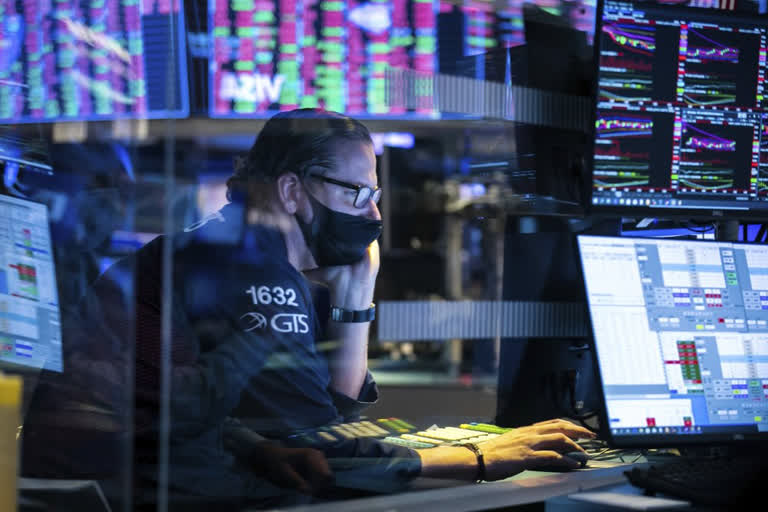Washington: The Dow Jones Industrial Average sank 943 points Wednesday as surging coronavirus cases forced more shutdown measures in Europe and raised fears of more restrictions in the US
The benchmark index is already down 5.6 per cent this week, on track for its biggest weekly decline since March. That’s when the market was selling off as strict lockdowns around the world choked the economy into recession.
The selling in US markets followed broad declines in Europe, where the French president announced tough measures to slow the virus’ spread and German officials agreed to impose a four-week partial lockdown. The measures may not be as stringent as the shutdown orders that swept the world early this year, but the worry is they could still hit the already weakened global economy.
Read:|US Congress grills Big Tech's CEOs
In the US, cases are increasing in just about every state and the number of deaths and hospitalizations due to COVID-19 are on the rise. Even if the most restrictive lockdowns don’t return, investors worry that the worsening pandemic could scare away customers of businesses regardless and sap their profits. The US economy could lose momentum just as prospects for more economic support from Washington have dwindled as Election Day nears.
“Many people had come to believe we were at least stable, and now we’re having a second uptick, which throws potential GDP and everything else up in the air,” said Randy Frederick, vice president of trading and derivatives at Charles Schwab. ”I did not expect this level of volatility or this degree of a sell-off.”
The S&P 500 lost 119.65 points to 3,271.03. The Dow lost 943.24 points, or 3.4 per cent, to 26,519.95. The Nasdaq composite slumped 426.48 points, or 3.7%, to 11,004.87. The selling was widespread, and 96% of stocks in the S&P 500 fell.
Crude oil tumbled on worries that an economy already weakened by the virus would consume even less energy and allow excess supplies to build higher. Benchmark U.S. crude dropped 5.7% to $37.39 per barrel. Brent crude, the international standard, fell 5.4 per cent to $39.12 per barrel.
Instead, investors headed into the safety of U.S. government bonds. The yield on the 10-year Treasury note fell to 0.77 per cent from 0.79 per cent late Tuesday. It was as high as 0.87 per cent last week.
A measure of fear in the stock market touched its highest level since June when the market suddenly tumbled amid concerns that a “second wave” of coronavirus infections had arrived. The VIX measures how much volatility investors expect from the S&P 500, and it climbed 20.8 per cent Wednesday.
Read:|'What-if' nightmare scenarios, polling errors headline Trump-Biden battle
